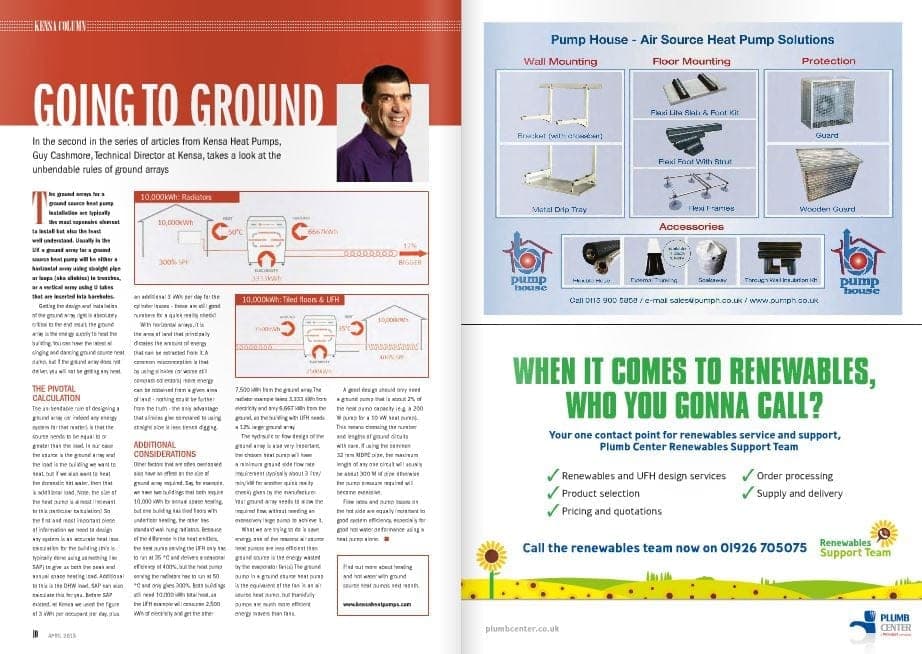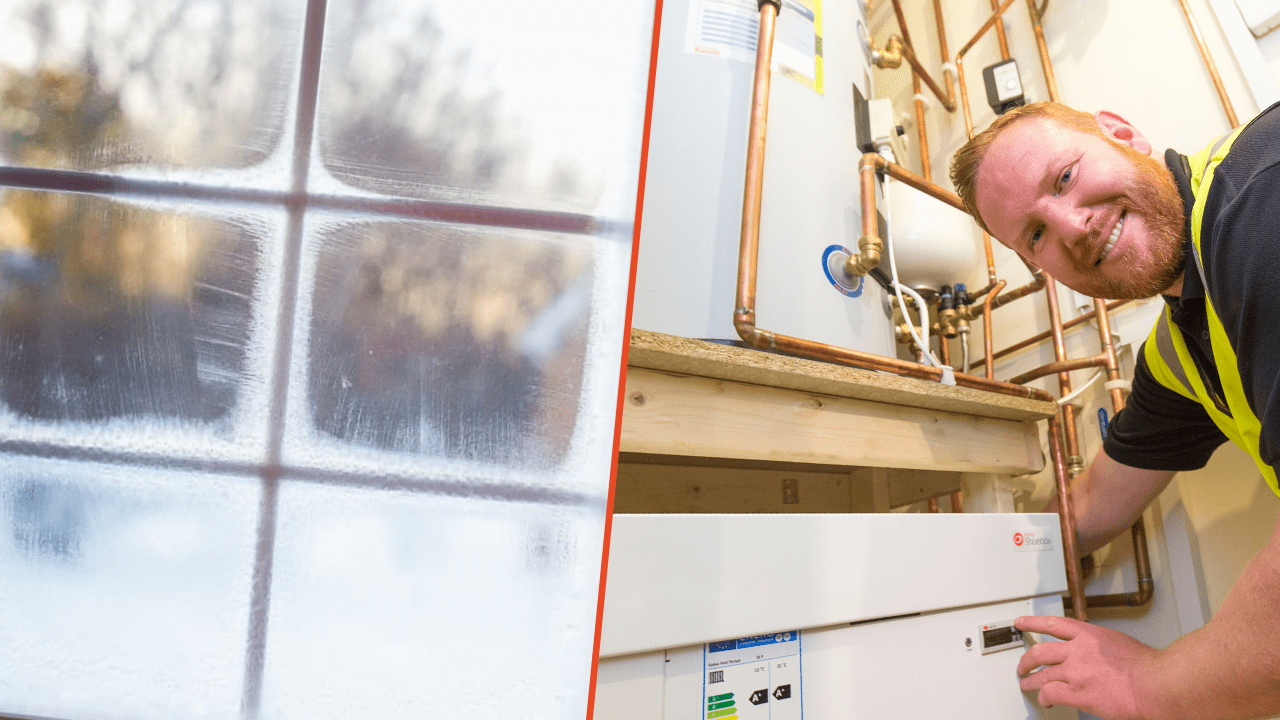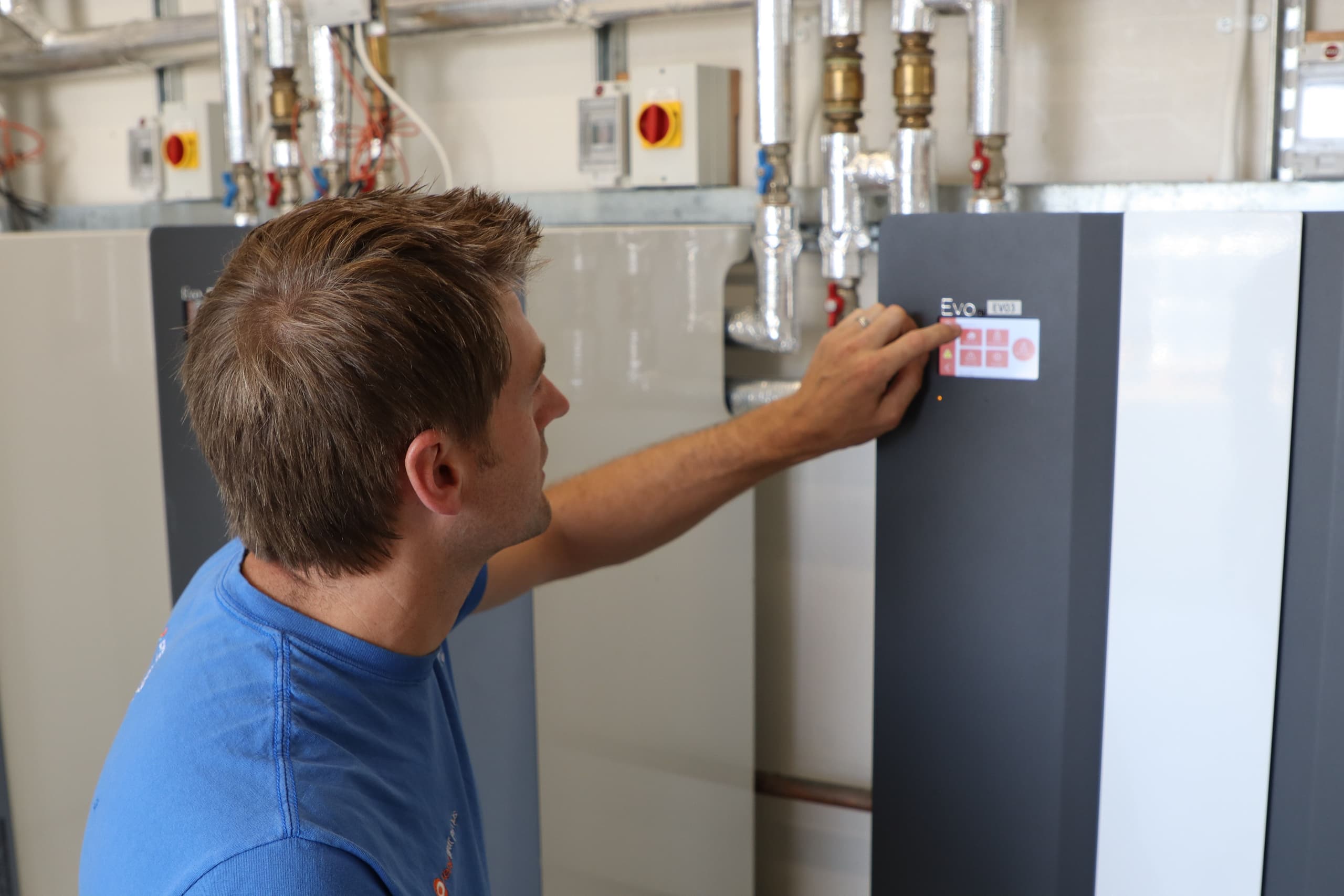Bivalent
- Installers
- 5 min read
Bivalent systems utilise a secondary boiler, which is designed to provide heat into the distribution system when the heat pump isn’t sized for 100% of the peak load. They are generally found in retro-fit applications where insulation levels of the building are not sufficient and a heat pump cannot meet all of the heating load effectively.
Bivalent systems have to be carefully designed to avoid the return temperature of the heating circuit being to high. If this return temperature is above the in-built temperature set point at which the heat pump turns off, the heat pump will never actually turn on and the whole of the load will be taken by the secondary boiler, resulting in higher than expected energy bills and carbon emissions.
The simplest and most effective way of providing the maximum efficiency of a bivalent heating system, while retaining the clients comfort, is to use an ‘either/or’ control logic. Simply put either the heat pump or the secondary boiler is operating, but not both together.
The system operates by use of an external temperature sensor (TS). This is set at to an external temperature above which the heating load is satisfied by the heat pump alone. If the external ambient temperature drops below this set point then the heat pump is switched off and the secondary boiler switched on to supply heat into the heating distribution system. Due to the higher output temperature of the secondary boiler it is important that the boilers flow is mixed via a mixing valve (MV) with the return flow to lower the temperature to a suitable level for the heating distribution system.
Retrofit-and-forget technology
Ground source heat pumps are a great replacement heating system for existing or renovated buildings, providing reduced running costs, minimal maintenance costs, and peace of mind for a system with a 25 year lifetime.
Read Kensa’s advice on this page about the factors you need to consider in order to progress with a ground source heat pump in a retrofit home.
Insulation is King
For a good heat pump installation on a renovated building, insulation is key.
Insulation is the single most important aspect of any building. It is the easiest way to reduce any buildings heating costs and as energy prices spiral, fitting good quality insulation will save energy, reduce fuel bills and reduce carbon emissions.
Ideally the insulation levels in the property will need to be such that there is a maximum peak heating demand of less than 50 Watts per square metre. This is approximately the level of insulation required to comply with Part L of the Building Regulations 2005 (Part F in Northern Ireland, and Part J in Scotland).
Can't insulate? Go bivalent
If there is no opportunity to improve the fabric insulation of the building a supplementary heat source could be used. This is known as a bivalent installation, where the existing boiler is retained to meet the peak demand of the building at the coldest times. As the boiler operates at a higher flow temperature, when in operation it will take the full load of the property effectively holding off the heat pump until it is capable of providing the level of comfort required. This can be done manually through time clocks or a more sophisticated automated system could be employed using external thermostats.
Bivalent installations can be effective, however a great deal of consideration needs to be given to the value of installing the heat pump in un-insulated buildings due to the capital cost involved, considering the running cost savings are likely to be marginal and the system performance may decrease in comparison to the existing boiler system due to the lower flow temperatures in the radiators.
Sizing it right
In order that an accurate heat pump sizing can be determined all properties, regardless of the insulation levels, will need a full MCS heat loss calculation. This process typically costs around £400 – £500.
If the insulation levels are unknown and generally of a lower standard than current Building Regulations, then it may cost £300 – £400.
If a heat pump is too small then the running costs will increase, too large and the heat pump could cycle on and off.
Kensa or your installer will take care of this process for you.
Working with radiators
As radiators in retrofit properties are typically sized for a flow temperature of 71°C – 82°C, they may well be undersized to work with a ground source heat pump (which requires a flow of around 50°C). Therefore the radiators might need replacing.
To understand what the maximum output of the radiators are at the reduced temperature and whether they are large enough, Kensa recommend you consult a heating engineer.
Make the retrofit switch to ground source heat pumps
- Guaranteed income for 7 years
- Minimal internal disruption
- Permitted Development Rights
- High temperature models to fit with existing systems and build type
- Removes costly reliance on fossil fuels
- No reliance on fuel deliveries (if off gas)
- No unsightly storage tanks (if using LPG)
- 365 days of guaranteed heat and hot water
Fulfilment: How to buy
(https://www.kensaheatpumps.com/wp-content/uploads/2014/01/manuals.jpg)
DIY
Experienced installers and self builders can utilise Kensa’s consultancy service through online and telephone based support and face to face training, ensuring an MCS accredited installation.
- Consultancy Service
(https://www.kensaheatpumps.com/wp-content/uploads/2014/01/manuals.jpg)
PROFESSIONAL SERVICES
Use of a Kensa Approved Installer provides complete peace of mind and flexibility.
- Approved Installer


